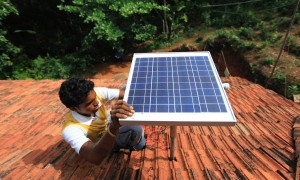
I’m guest hosting today’s Your Call Media Roundtable, when we’ll discuss the worsening situation in Haiti. The UN estimates that 4.9 million Haitians, nearly half the population, are now facing “acute food insecurity.”
165,000 Haitians have fled their homes, driven out by gang violence, with nowhere to go in Port-au-Prince, the Haitian capital city of nearly three million people, according to the Associate Press.
Joining us to discuss will be:
- Amy Wilentz, contributing editor at The Nation
- Widlore Mérancourt, Haitian reporter and editor-in-chief of AyiboPost
Then later in the program we’ll discuss the major new Supreme Court decisions on affirmative action and student loans, the latter just handed down this morning. The Court also rejected the so-called independent state legislature theory that would have given power over elections to state lawmakers.
In a 6-3 decision, the court’s conservative majority rejected the race-conscious admissions policies used by Harvard College and the University of North Carolina, finding that the programs violate the equal protection clause of the 14th Amendment. Justices Sonia Sotomayor, Elena Kagan, and Ketanji Brown Jackson dissented.
Jackson wrote in her dissenting opinion in Students for Fair Admissions v. University of North Carolina “with let-them-eat-cake obliviousness, today, the majority pulls the ripcord and announces ‘colorblindness for all’ by legal fiat. But deeming race irrelevant in law does not make it so in life.”
Joining us will be:
- Chris Geidner, journalist and MSNBC columnist whose Law Dork newsletter covers the Supreme Court, law and politics
- Elie Mystal , Justice Correspondent for The Nation, host of the new podcast, Contempt of Court with Elie Mystal, and the author of the Allow Me to Retort: A Black Guy’s Guide to the Constitution
Tune in at 91.7 FM in the San Francisco Bay Area or stream live at 10am PT. What comments or questions do you have for our guests? Call 866-798-TALK to join the conversation!
 Just like the developing world has leapfrogged wealthy countries with telecommunications — jumping right to cell phones over land lines — it may be doing the same with clean electricity grids.
Just like the developing world has leapfrogged wealthy countries with telecommunications — jumping right to cell phones over land lines — it may be doing the same with clean electricity grids.
Greenbiz reports on some of the microgrids being deployed in developing countries like Haiti, involving solar, some energy storage, and “internet of things” monitoring and control for customers. Essentially, the software can deploy specific amounts of electricity to individual customers based on their needs, like lighting and television watching. If they don’t pay, they lose service, but can restore it the next day if they have the money:
“We started with the idea that the poorest people in the world make the shrewdest financial decisions,” said [business owner] Thakkar. And he believes they have proved their point.
“Our first customer was an old gentleman in a small village. Everyone in the village came out to listen to our presentation. He asked two or three questions and then went back in his hut and came out with 1,000 rupees, which was the equivalent of about $20. He said, ‘Great, give it to me,'” he recalled of the 2008 start of the company.
The big difference in these low-income markets is that many customers just want basic electricity service for things like lights and charging phones. Obviously, developed markets have much more intense electricity needs.
But by scaling the market at this initial step, we’re learning what works and what doesn’t. And as costs come down and the business model proves itself, it could become a model that scales to the developed world. While the vision of communities going completely off grid may still be impractical or too expensive, these developing world examples show that we can get pretty far along that path. And with new technological breakthroughs, it could one day even enable a complete break with the traditional grid model even in the developed world.


